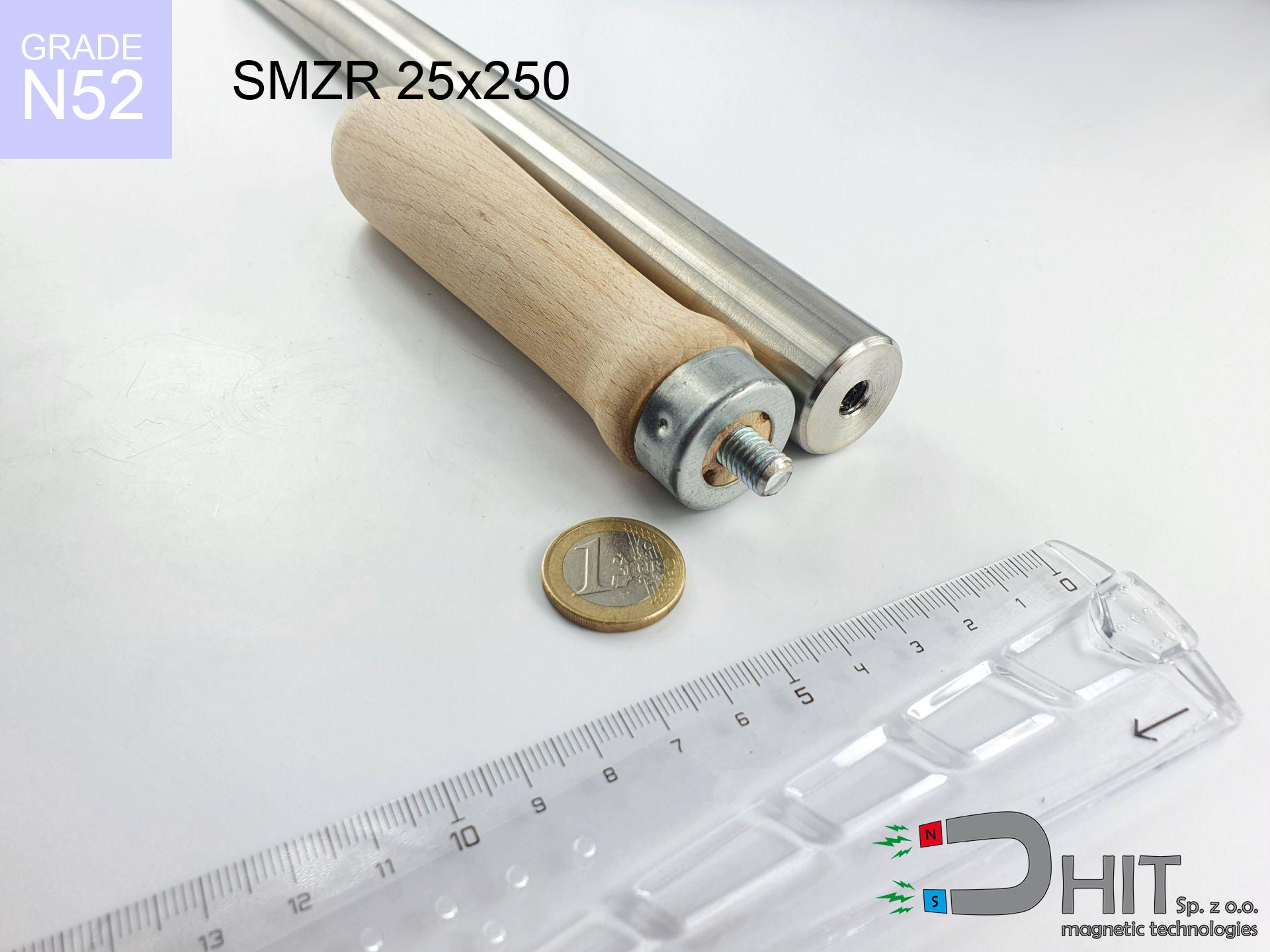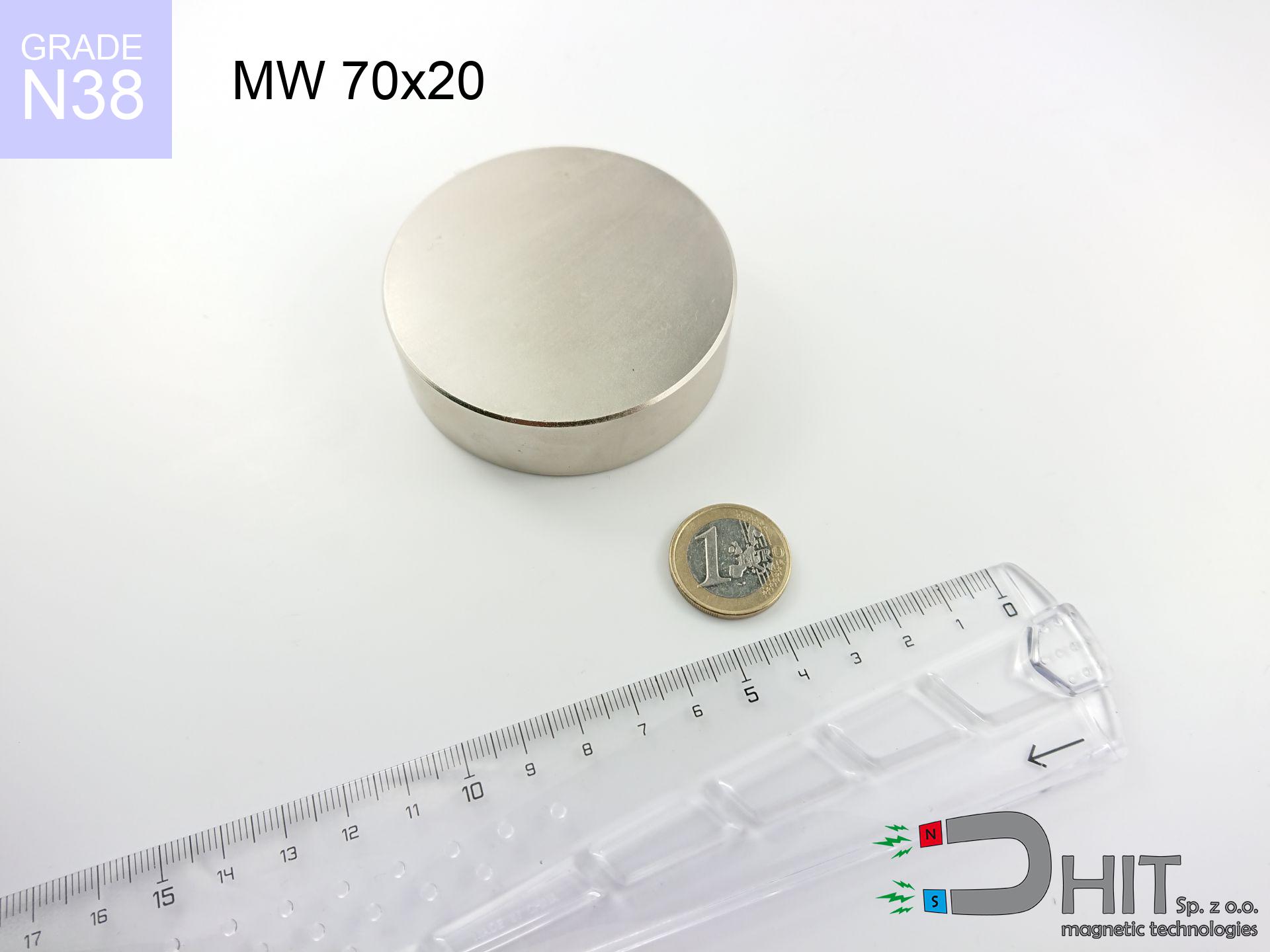SM 32x450 [2xM8] / N52 - magnetic roller
magnetic separator
catalog number 130465
GTIN: 5906301813361
diameter Ø
32
mm [±0,1 mm]
height
450
mm [±0,1 mm]
max. temperature
≤ 80
°C
catalog number 130465
GTIN: 5906301813361
diameter Ø
32 mm [±0,1 mm]
height
450 mm [±0,1 mm]
max. temperature
≤ 80 °C
1414.50 ZŁ gross price (including VAT) / pcs +
1150.00 ZŁ net price + 23% VAT / pcs
bulk discounts:
need more quantity?Want to talk about magnets?
Give us a call tel: +48 888 99 98 98 or write via form on the contact page. You can check the mass as well as the appearance of magnet in our magnetic mass calculator power calculator
Orders placed by 2:00 PM will be shipped on the same business day.
Specification: magnetic separator 32x450 [2xM8] / N52
Magnetic properties of the material N52
Physical properties of sintered neodymium magnets Nd2Fe14B
Product suggestions
Advantages as well as disadvantages of neodymium magnets NdFeB.
Apart from immense strength, neodymium magnets have the following advantages:
- They do not lose their strength (of the magnet). After about 10 years, their power decreases by only ~1% (theoretically),
- They are exceptionally resistant to demagnetization caused by an external magnetic field,
- In other words, thanks to the glossy nickel, gold, or silver finish, the element gains an aesthetic appearance,
- They exhibit very high magnetic induction on the surface of the magnet,
- Magnetic neodymium magnets are characterized by hugely high magnetic induction on the surface of the magnet and can operate (depending on the form) even at temperatures of 230°C or higher...
- Thanks to the flexibility in shaping or the ability to adapt to specific requirements – neodymium magnets can be produced in many variants of shapes and sizes, which expands the range of their possible uses.
- Key role in modern technologies – are used in computer drives, electric drive mechanisms, medical devices and other modern machines.
Disadvantages of neodymium magnets:
- They can break when subjected to a powerful impact. If the magnets are exposed to impacts, we recommend using magnets in a protective case. The steel housing in the form of a holder protects the magnet from impacts and at the same time increases its overall strength,
- Magnets lose their power due to exposure to high temperatures. In most cases, when the temperature exceeds 80°C, these magnets experience permanent reduction in strength (although it is worth noting that this is dependent on the form and size of the magnet). To avoid this problem, we offer special magnets marked with the [AH] symbol, which exhibit high temperature resistance. They can operate even at temperatures as high as 230°C or more,
- They rust in a humid environment. For outdoor use, we recommend using waterproof magnets, such as those made of rubber or plastic,
- The use of a cover - a magnetic holder is recommended due to the limited production capabilities of creating threads or complex shapes in the magnet
- Possible danger arising from small pieces of magnets pose a threat, if swallowed, which is particularly important in the context of child safety. It's also worth noting that small elements of these magnets have the potential to be problematic in medical diagnosis after entering the body.
Caution with Neodymium Magnets
Dust and powder from neodymium magnets are highly flammable.
Do not attempt to drill into neodymium magnets. Mechanical processing is also not recommended. Once crushed into fine powder or dust, this material becomes highly flammable.
The magnet is coated with nickel. Therefore, exercise caution if you have an allergy.
Studies show a small percentage of people have allergies to certain metals, including nickel. An allergic reaction often manifests as skin redness and rash. If you have a nickel allergy, try wearing gloves or avoid direct contact with nickel-plated neodymium magnets.
Neodymium magnets should not be near people with pacemakers.
Neodymium magnets generate strong magnetic fields. As a result, they interfere with the operation of a pacemaker. This happens because such devices have a function to deactivate them in a magnetic field.
Keep neodymium magnets away from GPS and smartphones.
Magnetic fields interfere with compasses and magnetometers used in navigation for air and sea transport, as well as internal compasses of smartphones and GPS devices.
Keep neodymium magnets away from the wallet, computer, and TV.
Neodymium magnets generate intense magnetic fields that can destroy magnetic media such as floppy disks, video tapes, HDDs, credit cards, magnetic ID cards, cassette tapes, etc. devices. They can also damage videos, televisions, CRT computer monitors. Do not forget to keep neodymium magnets away from these electronic devices.
Neodymium magnets can demagnetize at high temperatures.
Although magnets have shown to retain their effectiveness up to 80°C or 175°F, this temperature may vary depending on the type of material, shape, and intended use of the magnet.
Neodymium magnetic are highly fragile, they easily fall apart and can become damaged.
Neodymium magnets are characterized by considerable fragility. Neodymium magnets are made of metal and coated with a shiny nickel surface, but they are not as hard as steel. At the moment of connection between the magnets, sharp metal fragments can be dispersed in different directions.
Do not give neodymium magnets to youngest children.
Not all neodymium magnets are toys, so do not let children play with them. In such a situation, surgery is necessary to remove them. In the worst case scenario, it can result in death.
Neodymium magnets are over 10 times more powerful than ferrite magnets (the ones in speakers), and their strength can shock you.
Please review the information on how to handle neodymium magnets and avoid significant harm to your body, as well as prevent unintentional damage to the magnets.
Magnets will attract to each other, so remember not to allow them to pinch together without control or place your fingers in their path.
Magnets will bounce and touch together within a radius of several to around 10 cm from each other.
So you are aware of why neodymium magnets are so dangerous, see the article titled How very dangerous are powerful neodymium magnets?.

![SM 32x450 [2xM8] / N52 - magnetic roller SM 32x450 [2xM8] / N52 - magnetic roller](https://cdn3.dhit.pl/graphics/products/sm-32x450-2xm8-bir.jpg)





